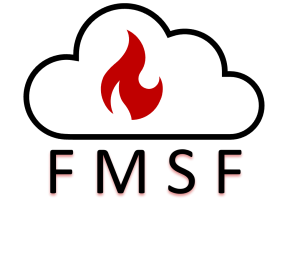Welcome to the Fire Modeling Services Framework (FMSF) User Guide
 Fire Modeling Services Framework (FMSF) is an Application Programming Interface (API) for machine to machine (or system to system) connections with a web-service/REST architecture. The FMSF provides hosted wildland fire behavior and effects models and tools for use within other systems or applications. The FMSF provides users with improved performance, consistent data, and faster analysis results. In addition, it reduces Information Technology (IT) development and maintenance needs by hosting the models/tools in one service instead of each system/application independently building and maintaining the same models/tools.
Fire Modeling Services Framework (FMSF) is an Application Programming Interface (API) for machine to machine (or system to system) connections with a web-service/REST architecture. The FMSF provides hosted wildland fire behavior and effects models and tools for use within other systems or applications. The FMSF provides users with improved performance, consistent data, and faster analysis results. In addition, it reduces Information Technology (IT) development and maintenance needs by hosting the models/tools in one service instead of each system/application independently building and maintaining the same models/tools.
Wildland fire behavior and effects models in the FMSF:
FLAM (FlamMap) – Static model that gives a "snapshot in time" of predicted fire behavior outputs (i.e., rate of spread, flame length, fire type) under a constant fire environment.
-
For more information about the model see the Desktop Application Help Guide.
-
For details about using the model within the FMSF see the Model Inputs Details section.
MTT_ (MTT, Minimum Travel Time) – Two-dimensional fire spread model that maps predicted fire progression and fire behavior under a constant fire environment.
-
For more information about the model see the Desktop Application Help Guide.
-
For details about using the model within the FMSF see the Model Inputs Details section.
RNDG (RANDIG, Random Ignition) – Probabilistic two-dimensional fire spread model that quantifies the relative likelihood and intensity of a fire occurring under a constant fire environment.
-
For more information about the model see the Desktop Application Help Guide.
-
For details about using the model within the FMSF see the Model Inputs Details section.
FARS (FARSITE, Fire Area Simulator) – Two-dimensional fire spread model that maps predicted fire progression and fire behavior under a variable fire environment.
-
For more information about the model see the Desktop Application Help Guide.
-
For details about using the model within the FMSF see the Model Inputs Details section.
FSPR (FSPro, Fire Spread Probability) – Probabilistic two-dimensional fire spread model used as a strategic decision aid tool looking at fire progression risk as it is determined by uncertainty in the fire environment.
-
For more information about the model see the WFDSS FSPro Overview Help Topic.
For details about using the model within the FMSF see the Model Inputs Details section.
FOFM (SpatialFOFEM Consumption and Emissions) – First order fire effects model for predicting fuel consumption and smoke production caused by prescribed fire or wildfire.
-
For more information about the model see the Desktop Application User Guide.
-
For details about using the model within the FMSF see the Model Inputs Details section.
SFTM (SpatialFOFEM Tree Mortality) – First order fire effects model for predicting tree mortality caused by prescribed fire or wildfire.
-
For more information about the model see the Desktop Application User Guide.
-
For details about using the model within the FMSF see the Model Inputs Details section.
For all models within the FMSF, fire behavior and first order fire effects calculations produced with the command line fire behavior applications developed by the Missoula Fire Sciences Laboratory, Missoula, MT.